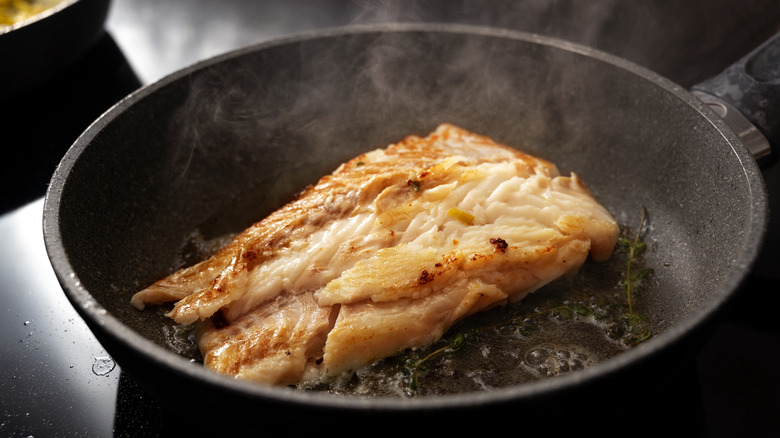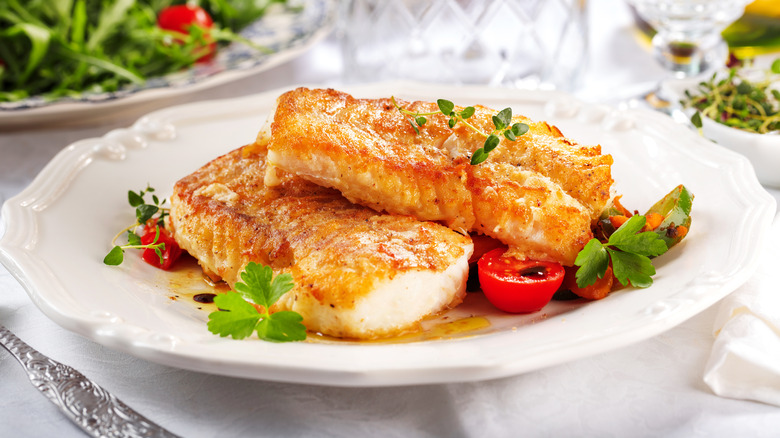The Reason You Shouldn't Make Tilapia In A Cast Iron Skillet
Some foods are best prepared in certain cookware. For example, you would never think to bake a pie in a frying pan, or grill up a steak in a muffin tin. Though not as obvious, the same applies to cast iron skillets and tilapia. Cast iron skillets may be one the most versatile tools in the kitchen, but according to Epicurious, they aren't the most ideal cooking medium for a fish like tilapia. This is due to a combination of the delicate meat of the tilapia and the material of the skillet.
As Epicurious explains, cast iron skillets are excellent at heat retention. In other words, they get hot and stay hot. This is great for heavy duty searing and frying, but it'll ruin tilapia. Tilapia is naturally flaky, and therefore must be handled very gently while cooking. If you use a cast iron, the high heat will be too intense, causing the fish to stick to the skillet and break apart when you try to flip it.
What cookware should you use for tilapia?
If using a cast iron skillet for tilapia traumatized you from ever cooking the fish again, you'll be happy to know that it actually isn't that challenging — as long as you have the right cookware. Southern Kitchen recommends a carbon steel pan instead. Cast iron is great at heat retention, but it's not so great at heat transfer, which is what keeps foods from sticking to the cooking surface. Unlike cast iron, carbon steel is a much better conductor of heat (via The Spruce Eats) and therefore more ideal for cooking tilapia, which relies on high heat transfer because it's so delicate.
If you don't have a carbon steel pan, Hy-vee suggests a nonstick one. As you're probably already familiar, nonstick pans rely on nonstick coating, rather than the heat conducting properties of steel (via Prudent Reviews). To properly cook the tilapia, all it takes is two to three minutes over medium high until the internal temperature reads 145 degrees Fahrenheit — no cast iron necessary.

